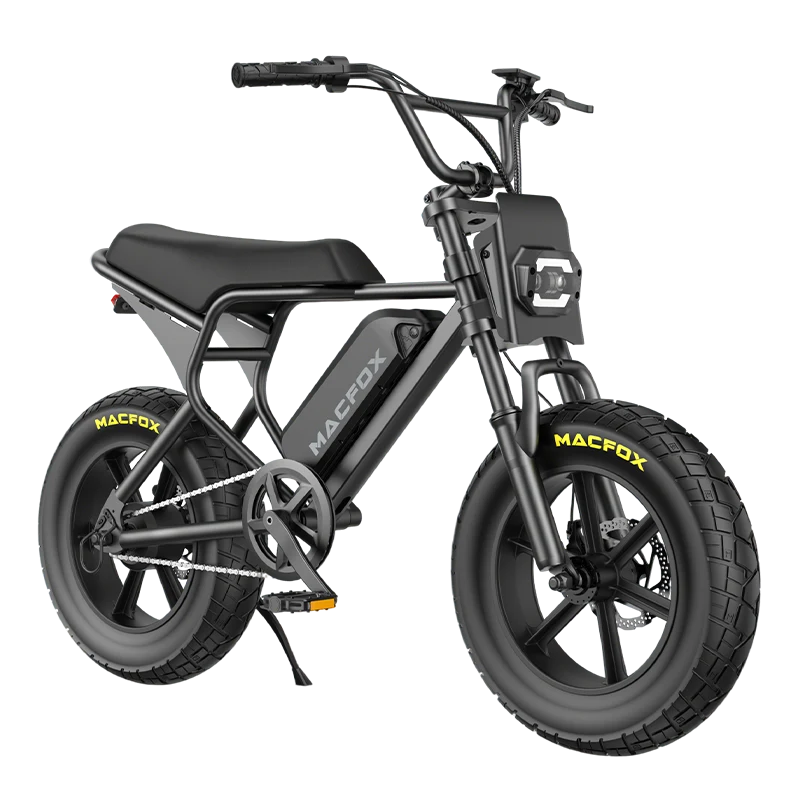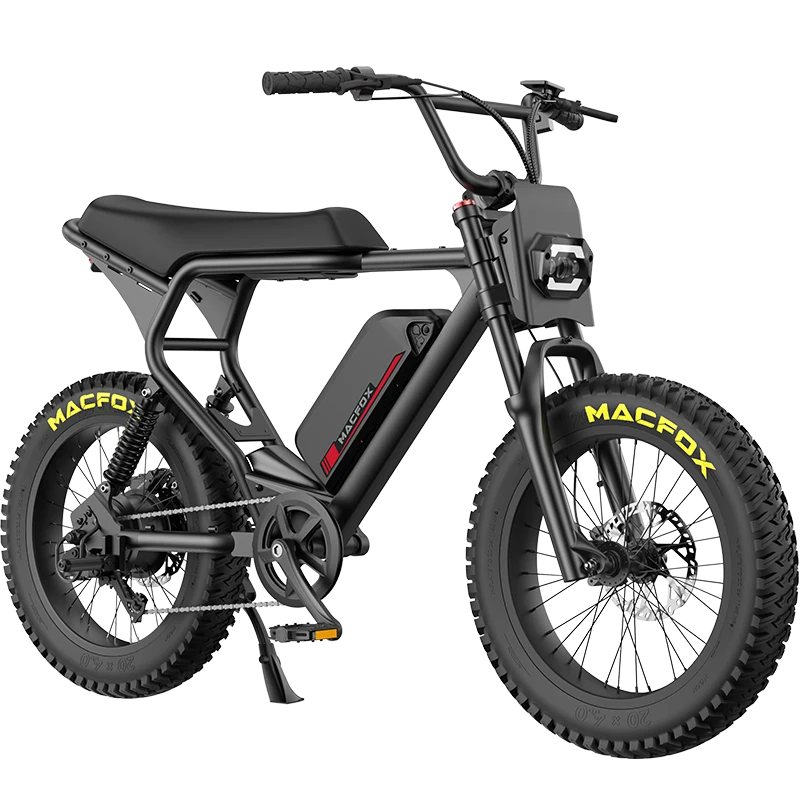It’s no surprise that the world is rapidly shifting towards pedal electric bikes. E-bikes offer numerous advantages, such as their speed, small road space requirements, and zero carbon emissions. However, while they may seem like a recent invention, E-bike prototypes were actually built years before the turn of the century, and millions of them have been sold since 1993.
Across the globe, individuals, countries, and companies are increasingly embracing E-bikes. Companies are utilizing them for their courier services to cut costs, and many countries are implementing policies to encourage their use. This leads us to the question: will electric bikes ultimately replace traditional bikes?
In this article, we will delve into this question and provide compelling facts and statistics to support our stance. Stay tuned for an in-depth exploration of this topic.
Contents
- 1.Brief History of Electric Bikes
- 2.The Current State of Electric Bikes
- 3.Electric Bike Global Usage Statistics
- 4.Why Do People Prefer Electric Bikes
- 4.1 Substitute for Cars
- 4.2 Safety
- 4.3 Speed
- 4.4 Less Effort
- 4.5 Delivery and Courier Services
- 5.Can Electric Bikes Replace Traditional Bikes
- 6.FAQs
- 7.Maybe it will be helpful for you
Brief History of Electric Bikes
Ogden Bolton Jr. made significant strides in the development of electric bikes when he filed the first patent for an electric bicycle on December 31, 1895. His invention featured a DC hub motor situated in the rear wheel, marking a significant milestone in the history of e-bikes.
Building upon Bolton's invention, Hosea Libbey came up with a double-motor electric bike just two years later, earning his own patent. Unlike Bolton's design, Libbey's e-bike featured motors placed in the crankset axle hub, providing a different approach to electric bike propulsion. In 1898, Michael Steffens and John Schnepf were also granted patents for their electric bikes, which incorporated a rear wheel drive system.
It took another century for innovators to improve and perfect electric bikes for general consumer usage, in spite of these early patents. The electric bike market was transformed in 1993 when Yamaha introduced the pedal assist technology, which greatly increased manufacturing and customer interest in e-bikes.
The Current State of Electric Bikes

Electric Bike Global Usage Statistics
Electric bikes have gained significant popularity worldwide, as reflected by various statistics:
- Europe accounts for 20% of the global electric bike market, with countries like Germany, France, and Italy leading the way.
- According to LEVA-EU, the number of electric bikes sold in Europe increased from 500,000 in 2005 to 3 million in 2019, indicating a significant growth in demand.
- In the Netherlands, half of the bikes on the streets in 2018 were electric, as reported by eBicycles. Spain also experienced a 55% annual increase in electric bike sales in the same year.
- Even in the UK, where electric bikes were not initially widely accepted, around 50,000 electric bikes are sold yearly, showing a growing demand.
- The USA has been relatively slower in adopting electric bikes, with annual sales accounting for less than 1% of all bicycle sales. However, according to INSG, the number of fat tire electric bike sold in the US increased from 185,000 in 2013 to over 400,000 in 2018.
Why Do People Prefer Electric Bikes?
Perhaps you are curious about the growing popularity of electric bikes over the years and why more and more people are choosing them over traditional bikes. These are relevant questions to consider when discussing the potential of e-bikes replacing traditional bikes.
The following are some insights (backed by data) on why people are increasingly embracing electric bikes:
Substitute for Cars
Many people are looking for more sustainable transportation options, and electric bikes offer a viable alternative to cars. According to a survey by Transport for London, 28% of electric bike riders in London reported purchasing e-bikes as a replacement for cars. A similar online survey conducted by MacArthur, Dill, and Person found that 64% of respondents cited replacing car trips as their reason for choosing e-bikes. Another e-bike report by Elliot Fishman and Christopher Robin showed that 60% of respondents purchased e-bikes to replace car trips, indicating a growing trend towards using e-bikes as a substitute for cars.
Related Reading: Macfox Tells You 5 Benefits of Cycling to Work
Safety
There have been concerns about the safety of electric bikes, but many riders feel that e-bikes actually make them safer. The report by MacArthur, Dill, and Person mentioned earlier revealed that 60% of respondents felt that e-bikes made them safer. Additionally, 42% of respondents reported that e-bikes helped them avoid collisions. Moreover, TREC final reports showed that only 20% of e-bike riders surveyed had been in any crash, indicating that people trust the safety of e-bikes.
Speed
Electric bikes are not motorbikes, but they do offer a speed advantage over traditional bikes. A study published in The International Journal of Behavioral Nutrition and Physical Activity found that electric bikes were 21% faster than traditional bikes, with a median speed of 23.1km/h compared to 18.4km/h for traditional bikes. In Copenhagen, 49% of people surveyed reported cycling because it was faster, further highlighting the speed advantage of e-bikes.
Less Effort
E-bikes make cycling more enjoyable and less strenuous due to their pedal assist system. While this has led to debates about whether riding e-bikes is truly an exercise or just a fun activity, it has made e-bikes popular among middle-aged and older adults. A survey by Transport for London showed that 20% of non-riders cited age or fitness as a barrier to cycling. E-bikes are now seen as viable alternatives for these demographics, with Halfords, the UK's largest retailer of bikes, reporting that 65% of its e-bike sales are to people over 55. In the study by Elliot and Christopher, 49% of respondents mentioned that the reduced effort required in riding e-bikes motivated them to ride.
Delivery and Courier Services
Companies are also embracing e-bikes for their delivery and courier services. E-bikes, with their zero carbon emissions, speed, and size, offer a cost-effective and efficient solution for delivery needs. They can minimize delivery costs, time, and effort, leading to improved business efficiency. As a result, many companies are incorporating e-bikes into their delivery and courier operations.
Can Electric Bikes Replace Traditional Bikes?
All the reports, statistics, and trends above indicate a clear trend towards the increasing adoption of e-bikes. E-bikes offer several advantages such as higher speed, ease of use, safety, and serving as a viable substitute for cars. Moreover, the cost of production for e-bikes is decreasing, largely due to the reduced cost of lithium-ion batteries. This suggests that in the coming years, there will likely be a surge in global e-bike production.
With the growing availability and popularity of e-bikes, it is expected that fewer people will opt for traditional bikes. This shift in consumer preferences could potentially lead to traditional bikes becoming less prevalent in the future, possibly even fading into history within a century. As technology continues to advance, e-bikes could evolve to be powered by artificial intelligence, further enhancing their capabilities and functionalities.
Overall, the trend towards electric pedal bike is gaining momentum, with increasing adoption rates and advancements in technology. As more people recognize the benefits of e-bikes, it is likely that they will become a dominant mode of transportation in the future, potentially replacing traditional bikes and even incorporating AI-powered features for enhanced performance and convenience.
FAQs
Q1:What are some reasons why people prefer electric bikes over traditional bikes?
People prefer electric bikes because they can serve as a substitute for cars, offer increased safety, provide higher speeds, require less effort, and are utilized for delivery and courier services.
Q2:How have electric bikes gained popularity globally?
Electric bikes have gained popularity worldwide, with significant market shares in Europe and increasing sales in countries like the Netherlands, Spain, the UK, and the USA.
Q3:Will electric bikes replace traditional bikes in the future?
The increasing adoption rates, advancements in technology, and the multitude of benefits offered by electric bikes suggest a potential shift towards them becoming the dominant mode of transportation, possibly replacing traditional bikes over time.


















